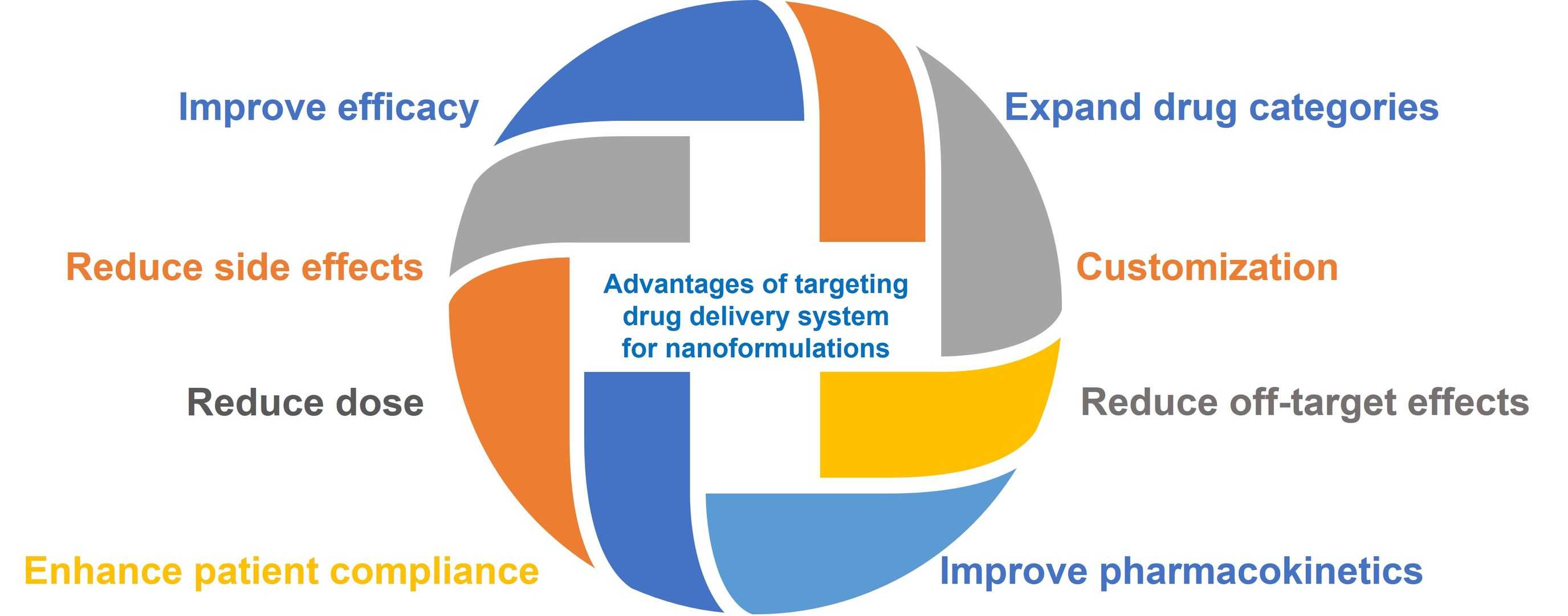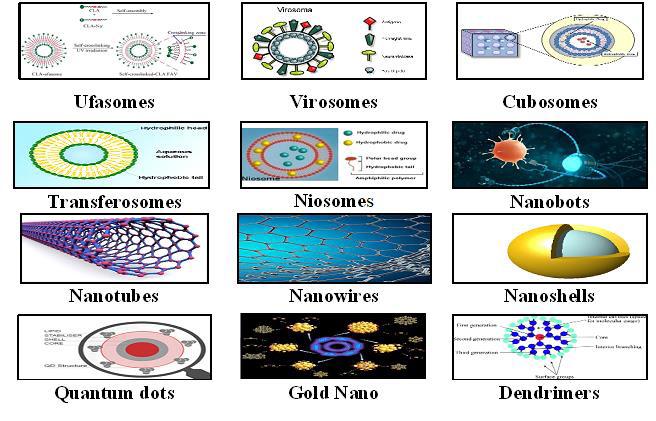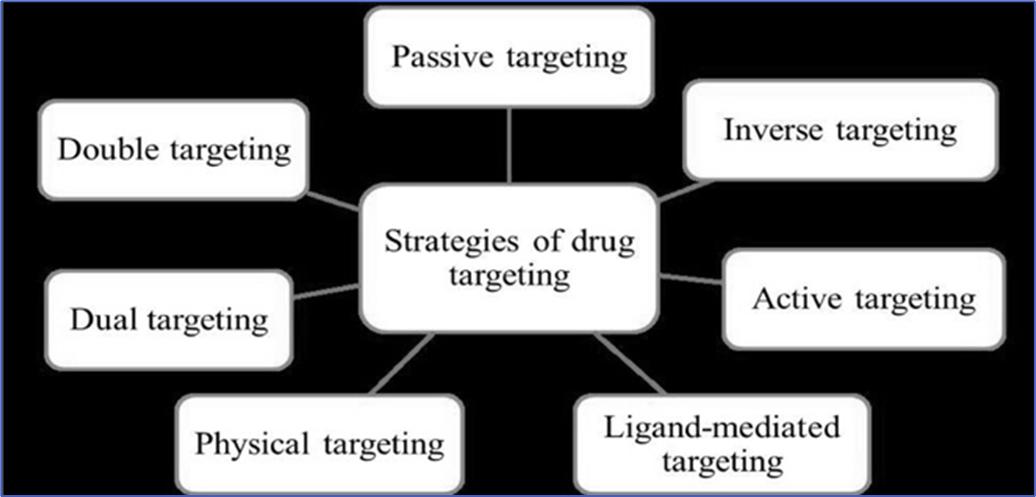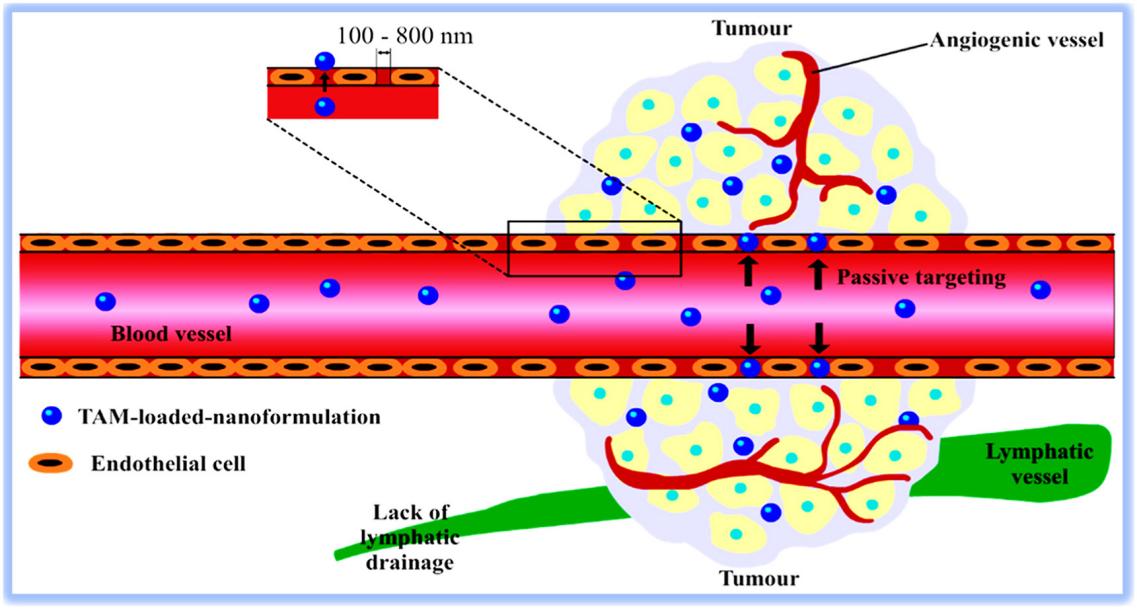Targeting Drug Delivery System for Nanoformulations
Inquiry
Targeted drug delivery is a therapeutic strategy that entails the precise delivery of therapeutic nanoformulations to specific tissues while minimizing systemic exposure. CD Formulation specializes in developing targeted drug delivery systems for nanoformulations, utilizing a wide range of nanocarriers. Our expertise encompasses the design and engineering of systems that incorporate nanotubes, nanowires, nanoshells, quantum dots, nanopores, gold nanoparticles, dendrimers, liposomes, niosomes, ufasomes, virosomes, cubosomes, nanobots, transferosomes, and more.
Advantages of Targeting Drug Delivery Systems
Targeted drug delivery for nanoformulations has the following significant advantages, including but not limited to improving efficacy, reducing side effects, reducing dosage, enhancing patient compliance, improving pharmacokinetics, reducing off-target effects, etc.
- Improve efficacy. By specifically targeting the affected cells or tissues, nanodrugs can be delivered directly to the site of action, increasing their effectiveness while minimizing side effects on healthy cells.
- Reduce side effects. Targeted drug delivery allows for precise control of nanoformulation concentration at the target site, reducing the possibility of harmful effects on other parts of the body.
- Reduce dose. Targeted drug delivery allows the use of lower doses of nanoformulations while still achieving the desired therapeutic effect. This can help minimize potential side effects and reduce the costs associated with nanoformulation treatment.
- Enhance patient compliance. Targeted drug delivery systems often require fewer doses or less frequent dosing, which can improve patient compliance and ensure nanoformulations are taken as prescribed.
- Improve pharmacokinetics. Targeted drug delivery can improve pharmacokinetics such as increased absorption, distribution, metabolism, and excretion. This can make nanoformulation levels more predictable and reduce variability in treatment response.
- Reduce off-target effects. Targeted drug delivery can minimize off-target effects by reducing exposure to healthy tissues and organs. This helps reduce side effects and improves overall tolerability.
- Customization. Targeted drug delivery can be tailored to a patient's individual requirements, such as age, weight, disease stage or genetic factors. This helps optimize treatment plans and improve treatment outcomes.
- Expand drug categories. Targeted delivery systems can expand the range of nanoformulations that can be administered safely and effectively, potentially leading to the development of new treatments for previously untreatable diseases.
 Fig.1 Advantages of targeting drug delivery system for nanoformulation. (CD Formulation)
Fig.1 Advantages of targeting drug delivery system for nanoformulation. (CD Formulation)
Nanocarriers of Targeting Drug Delivery Systems
Targeting of nanoformulation can be achieved through the use of nanocarrier systems, which are required to transport the drug to the target. The nanoformulation carrier captures the drug moiety and delivers it to the target site without releasing it to non-target sites. Many nanocarriers have been widely used in targeted drug delivery systems, including ufasomes, virosomes, cubosomes, nanotubes, nanowires, nanoshells, quantum dots, nanopores, gold nanoparticles, dendrimers, noisomes, nanobots, transferosomes, etc.
 Fig.2 Different types of nanocarriers for drug targeting. (Prabahar, et al. 2021)
Fig.2 Different types of nanocarriers for drug targeting. (Prabahar, et al. 2021)
Our Strategies for Targeting Drug Delivery Systems
CD Formulation relies on our advanced and innovative design concept to explore and research multiple strategies for targeting drug delivery systems, such as active targeting, passive targeting, inverse targeting, double targeting, dual targeting, physical targeting, and ligand-mediated targeting.
Passive Targeting
Passive targeting is the targeting of nanoformulations to systemic drug delivery systems. It is a response of the body to the physicochemical properties of the nanoformulations or nanodrug delivery systems, which trap the drug until it reaches the target site.
Active Targeting
In an active targeting strategy, drug delivery is accomplished by recognizing target populations on target cell receptors attached to the surface of the drug delivery system.
Inverse Targeting
Reverse targeting is to avoid passive absorption of the reticuloendothelial system by drug delivery systems. We inhibit the normal absorption function by injecting large amounts of blank drug delivery systems or macromolecular dextran sulfate to saturate and inhibit the defense mechanism.
Ligand-mediated Targeting
Ligand-mediated targeting relies on receptor uptake of native low-density lipoprotein particles and synthetic microemulsions of low-density lipoprotein particles coated with apolipoprotein proteins.
Physical Targeting
Physical targeting strategy aims to achieve external physical changes (including temperature changes, pH changes, and electric field changes) in nanoformulation delivery systems to allow them to be targeted to specific sites.
Dual Targeting
In the dual-targeting strategy, the nanocarriers have a synergistic effect on the entrapped drugs, thereby increasing the therapeutic efficacy.
Double Targeting
Double targeting strategy is a combination of time and space, where spatial delivery involves targeting the nanoformulation to the target site, while temporal delivery involves controlling the release of the nanoformulation at the target site.
 Fig.3 Different strategies for drug targeting. (Prabahar, et al. 2021)
Fig.3 Different strategies for drug targeting. (Prabahar, et al. 2021)
Highlights of Our Targeting Drug Delivery System Development
- With the help of our advanced targeting drug delivery system, our team has rich experience in constructing strategies for drug targeting, such as passive targeting, active targeting, inverse targeting, physical targeting, ligand-mediated targeting, double targeting, and dual targeting.
- We can also customize multiple nanocarriers for drug targeting, including nanotubes, nanowires, nanoshells, quantum dots, nanopores, gold nanoparticles, dendrimers, noisomes, ufasomes, virosomes, cubosomes, nanobots, transferosomes, etc.
- We can offer customers targeting drug delivery systems for nanoformulation regarding their detailed requirements for targeting nanodrug delivery systems.
Custom Targeting Nanoformulation Development Services
CD Formulation has extensive research on the development of targeting nanoformulation formulations. Based on our advanced targeted nanodelivery system, we provide customized formulation development services for targeting nanoformulations. Our professional team has conducted in-depth research on targeting nanoformulation delivery systems and applications and is able to develop targeting nanoformulations for different purposes, thereby promoting the clinical transformation and application of targeting nanoformulations.
Targeting Nanoformulation Development
Leveraging our advanced targeting nanoformulation delivery system, we offer customized development services tailored to our customers' specific needs. Through in-depth research, we provide personalized solutions that enhance the bioavailability and clinical safety of various targeting nanoformulations.
Published Data
Technology: Stimulus-responsive drug delivery systems
Journal: Journal of Drug Delivery Science and Technology
IF: 5
Published: 2023
Results:
By using a nanoformulation of the novel anticancer drug tamoxifen (TAM) instead of chemotherapy, the toxic effects will be greatly reduced. Nanocarriers are able to carry small amounts of tamoxifen to tumors for a long time and limit their dose-dependent toxicity. At the same time, the authors have made many attempts to synthesize novel drug delivery systems from different nanomaterials such as liposomes, polymer NPs, micelles, solid lipid nanoparticles, protein-based nanoparticles, dendrimers, and other types of nanoparticles. Studies have shown that novel drug delivery systems can be synthesized by incorporating tamoxifen into these carriers with great therapeutic potential.
 Fig.4 Passive delivery of TAM-containing nanocarriers to tumors through the EPR effect. (Hejin Jiang, et al. 2023)
Fig.4 Passive delivery of TAM-containing nanocarriers to tumors through the EPR effect. (Hejin Jiang, et al. 2023)
With the development of nanotechnology and delivery strategies, nanodrug delivery systems have been widely used in targeted treatment of various diseases. The research goal of CD Formulation is to use nanodrug delivery systems to deliver precise amounts of drugs to target cells without interfering with the physiological functions of healthy cells, and to build targeted nanoformulation delivery system platform. If you require our targeting drug delivery system services for nanoformulations, please contact us.
References
- Kousalya Prabahar, Zahraa Alanazi, Mona Qushawy. Targeted Drug Delivery System: Advantages, Carriers and Strategies. Indian Journal of Pharmaceutical Education and Research. 2021,55(2):346-353.
- Ayesha Sani, Mehrab Pourmadadi, Meysam Shaghaghi, et al. Revolutionizing anticancer drug delivery: Exploring the potential of tamoxifen-loaded nanoformulations. Journal of Drug Delivery Science and Technology. 2023,86,104642.
How It Works
STEP 2
We'll email you to provide your quote and confirm order details if applicable.
STEP 3
Execute the project with real-time communication, and deliver the final report promptly.
Related Services


 Fig.1 Advantages of targeting drug delivery system for nanoformulation. (CD Formulation)
Fig.1 Advantages of targeting drug delivery system for nanoformulation. (CD Formulation) Fig.2 Different types of nanocarriers for drug targeting. (Prabahar, et al. 2021)
Fig.2 Different types of nanocarriers for drug targeting. (Prabahar, et al. 2021) Fig.3 Different strategies for drug targeting. (Prabahar, et al. 2021)
Fig.3 Different strategies for drug targeting. (Prabahar, et al. 2021) Fig.4 Passive delivery of TAM-containing nanocarriers to tumors through the EPR effect. (Hejin Jiang, et al. 2023)
Fig.4 Passive delivery of TAM-containing nanocarriers to tumors through the EPR effect. (Hejin Jiang, et al. 2023)
